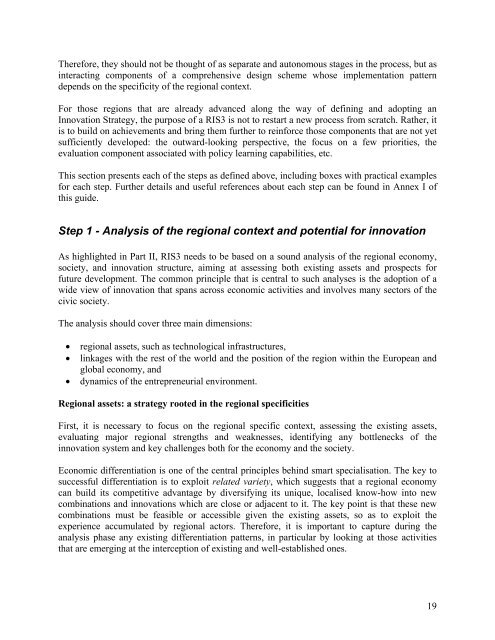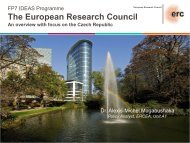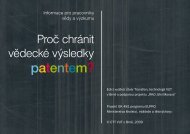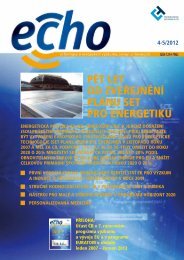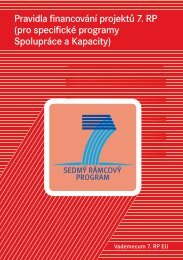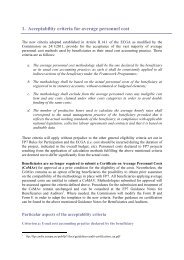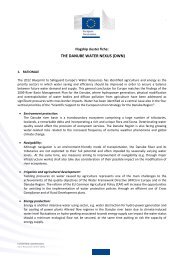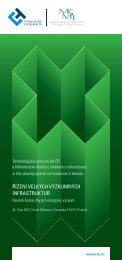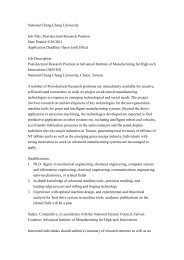Guide to Research and Innovation Strategies for Smart Specialisation
Guide to Research and Innovation Strategies for Smart Specialisation
Guide to Research and Innovation Strategies for Smart Specialisation
Create successful ePaper yourself
Turn your PDF publications into a flip-book with our unique Google optimized e-Paper software.
There<strong>for</strong>e, they should not be thought of as separate <strong>and</strong> au<strong>to</strong>nomous stages in the process, but as<br />
interacting components of a comprehensive design scheme whose implementation pattern<br />
depends on the specificity of the regional context.<br />
For those regions that are already advanced along the way of defining <strong>and</strong> adopting an<br />
<strong>Innovation</strong> Strategy, the purpose of a RIS3 is not <strong>to</strong> restart a new process from scratch. Rather, it<br />
is <strong>to</strong> build on achievements <strong>and</strong> bring them further <strong>to</strong> rein<strong>for</strong>ce those components that are not yet<br />
sufficiently developed: the outward-looking perspective, the focus on a few priorities, the<br />
evaluation component associated with policy learning capabilities, etc.<br />
This section presents each of the steps as defined above, including boxes with practical examples<br />
<strong>for</strong> each step. Further details <strong>and</strong> useful references about each step can be found in Annex I of<br />
this guide.<br />
Step 1 - Analysis of the regional context <strong>and</strong> potential <strong>for</strong> innovation<br />
As highlighted in Part II, RIS3 needs <strong>to</strong> be based on a sound analysis of the regional economy,<br />
society, <strong>and</strong> innovation structure, aiming at assessing both existing assets <strong>and</strong> prospects <strong>for</strong><br />
future development. The common principle that is central <strong>to</strong> such analyses is the adoption of a<br />
wide view of innovation that spans across economic activities <strong>and</strong> involves many sec<strong>to</strong>rs of the<br />
civic society.<br />
The analysis should cover three main dimensions:<br />
• regional assets, such as technological infrastructures,<br />
• linkages with the rest of the world <strong>and</strong> the position of the region within the European <strong>and</strong><br />
global economy, <strong>and</strong><br />
• dynamics of the entrepreneurial environment.<br />
Regional assets: a strategy rooted in the regional specificities<br />
First, it is necessary <strong>to</strong> focus on the regional specific context, assessing the existing assets,<br />
evaluating major regional strengths <strong>and</strong> weaknesses, identifying any bottlenecks of the<br />
innovation system <strong>and</strong> key challenges both <strong>for</strong> the economy <strong>and</strong> the society.<br />
Economic differentiation is one of the central principles behind smart specialisation. The key <strong>to</strong><br />
successful differentiation is <strong>to</strong> exploit related variety, which suggests that a regional economy<br />
can build its competitive advantage by diversifying its unique, localised know-how in<strong>to</strong> new<br />
combinations <strong>and</strong> innovations which are close or adjacent <strong>to</strong> it. The key point is that these new<br />
combinations must be feasible or accessible given the existing assets, so as <strong>to</strong> exploit the<br />
experience accumulated by regional ac<strong>to</strong>rs. There<strong>for</strong>e, it is important <strong>to</strong> capture during the<br />
analysis phase any existing differentiation patterns, in particular by looking at those activities<br />
that are emerging at the interception of existing <strong>and</strong> well-established ones.<br />
19


